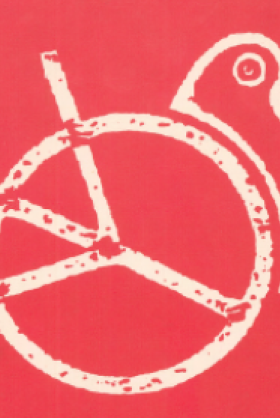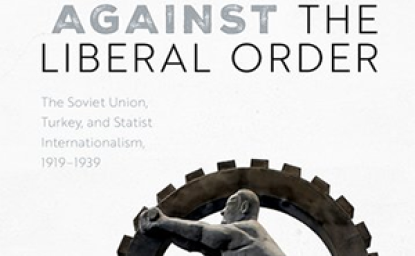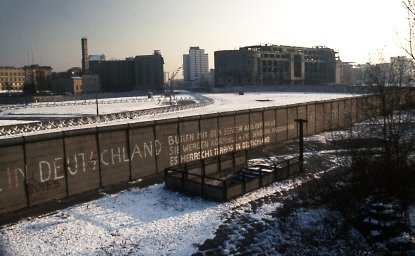Whither Pax Atomica? - The Euromissiles Crisis and the Peace Movement of the early 1980s


Introduction
[Click to view the complete list of documents in NPHIP's online Digital Archive]
French historian Maurice Vaïsse distinguishes between a pacifism after war and a pacifism before war[1] – if the former is a reaction against the horrors of the bloodshed that had preceded it, the latter is an endeavor to resolve great power conflict in apprehension of an impending devastation. From this perspective, the peace movement of the early 1980s in Europe belonged to the second type. It rose to prominence amid the rapid decline of the détente between the superpowers which led the possibility of a “limited nuclear war” in Europe to appear increasingly plausible to some observers. For peace movement historian Lawrence Wittner, the strength of the peace movement ebbed and flowed throughout the Cold War in reaction to perceived nuclear crises. The atomic bombing of Hiroshima and Nagasaki led to the pacifist upsurge of the late 1940s while atmospheric tests of the hydrogen bomb engendered the anti-nuclearism of the late 1950s and the early 1960s.[2]
The Decline of the Déténte
Despite the déténte between the superpowers which existed in the middle part of the 1970s, as the decade wore on, there were rising apprehensions within the NATO alliance about Soviet intentions. Ongoing upgrades to its conventional, tactical nuclear and long-range theater nuclear forces (LRTNF) in Europe were viewed warily.[3] What most concerned the NATO allies was the Soviet deployment of the SS-20 missile system from 1976 onwards as a replacement for the SS-4 medium-range ballistic missiles (MRBMs) and the SS-5 intermediate-range ballistic missiles (IRBMs). The liquid-fueled SS-4s and the SS-5s that were deployed in the late 1950s and in the early 1960s were considered by the Soviets to be obsolete and vulnerable to early destruction in the event of a conflict. The new SS-20 on the other hand, was a solid-fueled IRBMs fitted with three highly accurate warheads, or MIRVs (multiple independently targetable re-entry vehicle). Road mobile and therefore less vulnerable than its predecessors, the SS-20 was viewed by many in NATO as a potential first-strike weapon in a nuclear war.
With the first SS-20 unit becoming operational in late 1977, fear of this system’s potential first-strike capability emerged as the main justification for NATO’s LRTNF program between 1977 and 1979.[4] During this period, the relationship between the United States and its European allies was far from perfect. Despite the assurance of the Carter administration in late 1977 that American nuclear forces stationed in Europe were sufficient to meet the Soviet challenge, many within NATO were far from convinced – some perceived these assurances as a move by the United States to verbally alleviate NATO concerns, while pursuing its own arms control commitments.[5]
NATO's “dual track” Decision and the birth of the END
On December 12, 1979 NATO’s foreign and defense ministers adopted the “dual track decision” by which they offered to immediately begin negotiations with the Soviet Union on its ending or limiting SS-20 deployments, failing which NATO would deploy 108 Pershing II missiles and 464 ground-launched cruise missiles (GLCMs) from 1983 onwards, in order to attain a military nuclear balance with the Soviets in Europe. The reaction of the Soviet Union was “predictably prompt, strong and highly negative” stating that the NATO decision had destroyed all basis for arms control talks – a position it later moderated.[6] Nevertheless, the Soviet invasion of Afghanistan days later, on December 24, 1979 engendered US-Soviet ties to a new low. The Carter administration withdrew the SALT-II treaty from the US Senate, which made its ratification politically impossible.
The year 1980 saw a rise in popular opposition all over Europe to the NATO TNF decision which spiraled into a massive continental peace movement within a very short period of time. During this period, many members of the general public and several European government officials alike believed that the deployment of highly capable TNF weapons would make nuclear warfare in Europe more probable than ever before. In April 1980, an appeal for European Nuclear Disarmament (END) was launched at a press conference in the British House of Commons and in several European capitals (see Document 1). The press conference was addressed by Mary Kaldor, E.P. Thompson, Eric Heffer, Zhores Medvedev, Tony Benn, Bruce Kent and Dan Smith. It launched a signature campaign and, by August 1980, generated significant support from across Europe. The popular agitation surrounding the peace movement of the early 1980s in Europe, frequently criticized NATO and the United States for being responsible for an impending nuclear war in the Continent. (see Document 2 and Document 3).
Reagan's New Cold War and the Intensification of the Peace movement
With Ronald Reagan’s inauguration as president of the United States in 1981, US-Soviet relations found little possibility for improvement. Members of his administration and President Reagan himself openly voiced their disapproval of the Soviet Union. Détente, he stated, was “a one-way street that the Soviet Union has used to pursue its own aims.”[7] In October 1981 the National Security Decision Directive (NSDD)-13 laid down the nuclear weapons employment policy of the Reagan administration. The following month, the Reagan administration took the December 1979 Dual Track decision one step further by proposing the “zero option.” Under this arrangement, the United States promised not to proceed with its deployment of Pershing II and Ground Launched Cruise Missiles (due to begin in 1983 according to the NATO dual track proposal of 1979), if the Soviet Union removed its SS-4, SS-5 and SS-20 missiles from Europe. The Soviet Union summarily rejected the proposal as unacceptable.
Many regarded Reagan's “zero option” as a propaganda ploy as they believed that the Reagan administration knew that the Soviets would reject it, and thus it “would make for a good speech and be an effective reply to Soviet propaganda in Western Europe.”[8] In the same speech that he gave at the National Press Club in November 1981, Reagan also called for the “Strategic Arms Reduction Talks” (START). Thus, technically with the rejection of the “zero option”, the Soviets also rejected an arms control endeavour. The onus of inaction thus came on the Soviets and the Reagan administration could no more be solely blamed for the deteriorating US-Soviet ties. As the failure of Pax Atomica seemed more and more imminent, the soaring anxiety, alarm, apprehension and mistrust of the national governments across Europe, contributed to the success of the movement. The European peace movement of this period, let out a bold and radical cry calling for a nuclear-free zone from Poland to Portugal as the only solution to save mankind from the peril of a nuclear catastrophe.
In the spring of 1982, the “Fiscal Year 1984-1988 Defense Guidance” was approved in the United States. This along with NSDD-32, articulated US National Security Strategy for fighting a nuclear war.[9] The Reagan administration began to promote the idea that effective deterrence necessitated effective war-fighting capabilities. It called for “nuclear decapitation” of the Soviet political and military leadership and promoted the concept of “horizontal escalation”, which advocated meeting the aggressor not merely at its immediate front but in several other regions, in order to exploit its weaknesses wherever possible. Such manifest verbal bellicosity of President Reagan and his aides made the public even more panic-stricken and blew more wind to the sails of the peace movement. The CUDIP (Comitato Unitaro per il Disarmo), formed in August 1981 began to agitate against the Italian government's decision to establish a NATO missile base in Comiso in Sicily (see Document 5) and two-thirds of Comiso's population signed a petition against the missile base plan.[10]
Members of the END even tried to reach out to independent peace groups in Eastern Europe and the Soviet Union. E.P. Thompson promoted the independent “Anti-Nuclear Campaign Hungary” (see Document 4), calling for better dialogue between East and West and a “détente between peoples” (see Document 2). On June 4, 1982 the Group for Establishing Trust, an eleven-member independent peace group based in Moscow was formed, led by 26 year old artist Sergei Batovrin. The group denounced the activities of the Soviet Committee for the Defense of Peace as an instrument of Soviet foreign policy and proclaimed itself as the non-partisan voice for peace from Moscow (see Document 6, and Documents 8-10), calling for trust between Soviet and American people, an end to nuclear testing and a nuclear-free zone in Moscow.
Cover from the first issue of the bulletin of the Group for Establishing Trust
In July 1982, a group of Scandinavian women organized the Nordic Peace March '82, which was a three week journey from Stockholm to Minsk (via Helsinki, Leningrad and Moscow). When the Soviet Peace Committee requested that the marchers to go on to Vienna via Budapest and Prague, the Scandinavian marchers refused. While most of them returned to Scandinavia from Minsk, some continued and the march was joined in Moscow by affiliates of the Soviet Peace Committee, the World Peace Council and government-backed contingents from Eastern bloc countries like Czechoslovakia. This was viewed by some, like Hungarian activist Ferenc Köszegi, as tarnishing the non-political nature of the march (see Document 4). However, during the Peace March in Moscow, Western activists like Danielle Grünberg and Jean Stead, succeeded in contacting some members of the Group for Establishing Trust and learned about their agenda and activities (see Document 6).
Government persecution of independent peace movements also surfaced in Turkey after the military coup of 1980, with members of the Turkish Peace Association (TPA) arrested and put on trial in 1982 (see Document 7). The TPA campaigned against the deployment of cruise and Pershing II missiles in Western Europe, proposals for siting the neutron bomb in Turkey and the economically damaging arms race with Greece, and called for a peaceful solution to the conflicts in the Middle East. The trial of the TPA members led to a huge international outcry with organizations like the END and the Amnesty International, among others, agitating for a fair trial for the TPA members.
Missile Deployment begins against the “Evil empire”
In March 1983, Reagan made a speech in which he denounced the Soviet Union as an “evil empire” and the “focus of evil in the modern world.”[11] He criticized the nuclear freeze movement in the United States as “a very dangerous fraud” capable of only bringing forth “an illusion of peace.” As an alternative, Reagan advocated “peace through strength.”[12] As the United States and the Soviet Union failed to find mutually agreeable ground in their negotiations by November 1983 over the LRTNF, the NATO deployment of missiles commenced, outraging the European public. On 22 November the West German Parliament approved the deployment of Pershing II missiles and the next day, the first American INF missiles arrived in Europe. In retaliation, the Soviet Union walked out of INF negotiations going on in Geneva – the talks remained suspended till March 1985.
The momentum of the anti-nuclear movement reached a crescendo during this period. Renowned peace movement historian Lawrence Wittner notes that in October 1983, approximately five million people participated globally in nuclear disarmament demonstrations.[13] By early 1985, the national membership of the Campaign for Nuclear Disarmament (CND) in the United Kingdom rose to 100,000.[14] The CND decried the agreement attained in 1982 between conservative Prime Minister Margaret Thatcher and Ronald Reagan for the British acquisition of the Trident II weapon system, under the Polaris Sales Agreement of 1963, and strongly opposed the British governmental plans to conduct a nationwide civil defense drill.
It is interesting to note that most independent peace activists, whether in the West or in the East were primarily from the well-educated middle classes.[15] Many of them were young students from urban centers, as in the case of Italy and Hungary. This sometimes made it easier for the government to discard their activism as a movement of “hippies” that did not truly reflect the aspirations of the mainstream society. The Soviet authorities used such an argument to discredit the Moscow-based Group for Establishing Trust. Furthermore, since the Soviet Union had inserted itself into Western “peace politics” (see Document 11), actively encouraging the Western anti-nuclear movement in order to prevent the NATO missile deployment, it made it easier for the Western governments to reproach the activities of the Western peace groups as Soviet-sponsored propaganda.
The INF treaty and the end of Cold War
The anti-nuclear movement in Europe had its aims achieved when Ronald Reagan and Mikhail Gorbachev finally signed the Intermediate-Range Nuclear Forces (INF) Treaty in 1987 in Washington, DC. The treaty sought to eliminate all ground-launched cruise and ballistic missiles of the United States and the Soviet Union, with a range between 500 to 5500 kilometers, within three years of the treaty’s entry into force. The next year in 1988, Mikhail Gorbachev declared that the Soviet Union would no longer interfere in the internal affairs of the Communist countries of East-Central Europe, reversing the Brezhnev doctrine, which for so long had determined the close relationship between Moscow and its satellite states across the Iron Curtain. Few had anticipated then that 1989 would emerge as an annus mirabilis leading to the end of communism in the Continent. Neither had many imagined the peaceful end of the Cold War with the implosion of the Soviet Union two years later.
Jayita Sarkar is a PhD candidate and teaching assistant in International History at the Graduate Institute of International and Development Studies in Geneva. Email: jayita.sarkar [a] graduateinstitute.ch
Documents:
[Click to view the complete list of documents in NPHIP's online Digital Archive]
Document 1
Pamphlet from the Bertrand Russell Peace Foundation arguing for the creation of a nuclear-free zone in Europe. Argues that by becoming nuclear-free Europe will prevent further proliferation and development of nuclear weapons.
Reproduced with the permission of the Bertrand Russell Peace Foundation, www.russfound.org
Document 2
E.P. Thompson, Beyond the Cold War (London: Merlin Press jointly with END, 1982)
Lecture by EP Thompson before the Worcester City Guildhall seeking to define the Cold War in a contemporary context. Thompson argues that the standard dichotomous definitions of the past have become improper and the Cold War is now best defined as a developed habit supported by the material interests of each side, most importantly military and political actors. He describes the Cold War as a method for leaders to easily access the ideological regulation and social discipline needed to ensure their positions. Therefore, Thompson argues, since these leaders have a direct interest in its continuance, people, and not states, must bring about any significant change in the Cold War.
Reproduced with the permission of Ben Thompson, Kate Thompson, and the Merlin Press, www.merlinpress.co.uk
Document 3
Speeches from a European Nuclear Disarmament Conference in Glasgow with an introduction from EP Thompson on the strategic importance of the North Atlantic Ocean in NATO and the Soviet Union's nuclear weapons programs. Contains a speech from Olafur Grimsson, future President of Iceland, on the importance of links between countries, such as Norway, Denmark, and Greenland, in opposing the stationing or launching of missiles from the region. Calls for turning the North Atlantic Ocean into a nuclear free zone. Followed by a speech from activist Angus McCormack protesting the expansion of Stornoway Airport in Scotland, and the assumed militarization of the region that would ensue. Describes the creation of Keep NATO Out, the local group that opposed expansion plans, and its dealings with the Ministry of Defense/NATO.
Reproduced with the permission of Angus McCormack, Ben Thompson, Kate Thompson, and the Merlin Press, www.merlinpress.co.uk
Document 4
Pamphlet from European Nuclear Disarmament containing two articles by Hungarian activist Ferenc Koszegi detailing the rise of independent peace groups within Hungary. Koszegi describes the make-up of the groups (mostly ages 14-20 and in secondary schools, along with religious groups) and problems for their growth and effectiveness, including the potential co-option by the existing state peace council and outside manipulation. He argues that the groups should increase communication networks and open dialogue with the west in order to survive and prosper. The pamphlet also contains the transcript of a speech delivered by E.P. Thompson to an independent peace group in Budapest advocating for such peace groups and the transcending of Cold War rhetoric for the purpose of nuclear disarmament.
Reproduced with the permission of Ben Thompson, Kate Thompson, and the Merlin Press, www.merlinpress.co.uk
Document 5
Ben Thompson, Comiso: END Special Report (London: Merlin Press jointly with END, 1982)
Pamphlet from European Nuclear Disarmament promoting a resistance campaign against the placement of 464 cruise missiles in the town of Comiso, on the southern coast of Sicily. Aimed at creating an effective protest, author Ben Thompson details the political and social background of the region, the anti-missile campaign that already exists, local opposition, and directions on how to get to Comiso to take part in any future protests. See also Thompson's unpublished description of the protest, "Diary of a Hunger Strike."
Reproduced with permission of Ben Thompson and the Merlin Press, www.merlinpress.co.uk
Document 6
Pamphlet from European Nuclear Disarmament with two first-hand accounts of a Scandinavian women’s peace march through Moscow that visited with an independent Soviet peace group. Includes details on the process and END’s internal debate on how to interact with the emerging movement, along with publications of the peace group itself, Western journalistic sources, official documents, and photographs.
Reproduced with permission of the Merlin Press, www.merlinpress.co.uk
Document 7
Pamphlet from European Nuclear Disarmament detailing the trial of members of the Turkish Peace Association (TPA). Describes the goals of TPA, its arrested members, and the denial of basic rights during the trial. Contains personal accounts of the peace campaign environment in Istanbul and of the trial itself, including published courtroom speeches and the background of the trial.
Reproduced with permission of the Merlin Press, www.merlinpress.co.uk
Documents 8-10
The Group for Establishing Trust, Return Address Moscow: International News Bulletin on Independent Peace Activity in USSR, Issue No.1-3, 1984-[1985].
Bulletin by the Group for Establishing Trust Between the USSR and the USA, an independent peace organization in the Soviet Union. Three issues were editor Sergei Batovrin and published from New York City. They contain news on the peace movement in the Soviet Union and the harassment and imprisonment of activists by the government.
Reproduced with the permission of editor Sergei Batovrin.
Document 11
Disarmament: Who's Against? (Moscow: Military Publishing House, 1983)
Soviet military pamphlet discussing what it sees as the two different approaches to nuclear and conventional arms limitation between the U.S. and the Soviet Union. Argues that while the Soviet Union works for constructive talks, the U.S. obstructs agreements and uses propaganda rhetoric to disguise its true aggression. Translated for publication from the Russian text, "Razoruzhenie, kto protiv?"
[1] Maurice Vaïsse. “Le passé insupportable: Les pacifismes, 1984, 1938, 1914,” Vingtième Siècle : Revue d’histoire 3 (July 1984) : 27-39.
[2] Lawrence Wittner. “Where is the nuclear abolition movement today?,” Disarmament Forum, Geneva: UNIDIR, 2010, 8. http://www.unidir.org/pdf/articles/pdf-art3018.pdf
[3] Raymond L. Garthoff. Détente and Confrontation: American –Soviet Relations from Nixon to Reagan. Washington, DC: Brookings Institution, 1994, 942-3.
[4] Ibid.
[5] Ibid., 943.
[6] Ibid.,955.
[7] “The President's News Conference of January 29, 1981,” Weekly Compilation of Presidential Documents, vol. 17 (February 2, 1981), 66. Cited in Raymond L. Garthoff. The Great Transition : American- Soviet Relations and the End of the Cold War. Washington, DC :Brookings Institution Press, 1994, 8.
[8] Kenneth W. Thompson, ed. Foreign Policy in the Reagan Presidency: Nine Intimate Perspectives. Maryland: University Press of America,1993, 6.
[9] Raymond L. Garthoff. The Great Transition : American- Soviet Relations and the End of the Cold War. Washington, DC :Brookings Institution Press, 1994, 36-7.
[10] Lawrence Wittner. Confronting the Bomb: A Short History of the World Nuclear Disarmament Movement. Stanford, CA: Stanford University Press, 2009, 151.
[11] Garthoff, 1994, 9.
[12] Ibid., 10.
[13] Lawrence Wittner. “Where is the nuclear abolition movement today?,” Disarmament Forum, Geneva: UNIDIR, 2010, 7.
[14] Lawrence Wittner. Confronting the Bomb: A Short History of the World Nuclear Disarmament Movement. Stanford, CA: Stanford University Press, 2009, 144.
[15] Ibid.
Author


Nuclear Proliferation International History Project
The Nuclear Proliferation International History Project is a global network of individuals and institutions engaged in the study of international nuclear history through archival documents, oral history interviews, and other empirical sources. Read more




